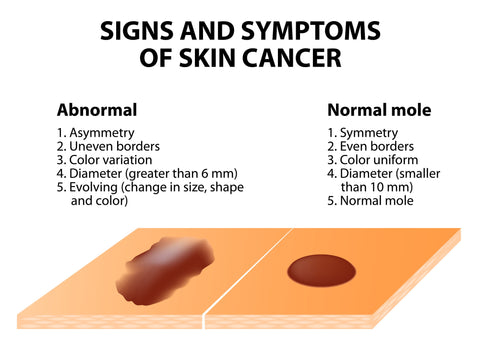How well do you know sun safety? Skin cancer myths and misinformation about sunburns are commonplace. Do you know how to keep your skin safe from sun exposure? Take a look below for the facts about five common sun safety myths!

1. The sun is only damaging in the summer.
MYTH: UV radiation is present all year round. UVA radiation, which accounts for 95% of the sun's rays that reach the ground, is associated with skin damage, aging, and skin cancer. UVB radiation, which fluctuates in intensity and is more present from spring to fall, is more likely to cause sunburns, so its effects are much more obvious. UVA rays are always present and may even gain strength at times in the winter due to the reflective nature of snow!
Sun damage doesn't just happen when the sun is high in the sky, either. You can get sun damage on windy, cloudy, or cool days. Make sure you're limiting your exposure by applying sunscreen and wearing long sleeves, pants, hats, and UV-filtering sunglasses.

2. A Higher SPF Will Let You Stay in the Sun for Longer
MYTH: Sun Protection Factor (SPF) is a measure of the amount of UV radiation that a sunscreen can block, not how long you can be safely exposed to the sun. For instance, SPF 30 sunscreens will block about 96.7% of UV radiation while an SPF 50 sunscreen filters about 98% of it. You will still need to reapply your sunscreen after 2 hours of exposure, or after 60-90 minutes if you're sweating excessively or swimming.

3. A Base Tan Will Protect You From Burning
MOSTLY MYTH: There is a belief that getting a tan ahead of a period of prolonged sun exposure will help prevent burns, but at best it's estimated to provide an SPF of about 3 or 4, well below the SPF 30 recommended by medical professionals. Remember, all tanning is essentially skin damage. Absorbing that damage for a negligible amount of sun protection is less effective than just using sunscreen.

4. Tanning Beds are a Safe Alternative to Sun Tanning
MYTH: Tanning beds can cause just as much skin damage as the sun, as well as increase your risk of skin cancer. The American Academy of Dermatology states that a single indoor tanning session can increase your risk of developing melanoma by 20%, squamous cell carcinoma by 67%, and basal cell carcinoma by 29%. In addition, indoor tanning can also the same wrinkles, age spots, and loss of skin firmness that the sun can cause.

5. Skin Cancer is Only a Risk If You Have Fair Skin
MYTH: Skin cancer can affect people with any skin tone. It's more common in those with fairer skin, but it's also considered easier to detect in light skin. It's more likely for someone with darker skin to be diagnosed at a later stage, so it's important to regularly do self-examinations and visit your doctor if you find anything unusual or concerning on your skin.
Remember, UVB rays are the ones that damage the outermost layers of skin, causing sunburns. UVA rays that are present all year penetrate more deeply, and these are proven to contribute to skin cancer. If you tan easily and rarely burn, you can still get skin cancer.
Skin cancer can be diagnosed even in people who don't seek out regular sun exposure. Those with a family history of skin cancer or with a compromised or medically suppressed immune system are also at increased risk.
